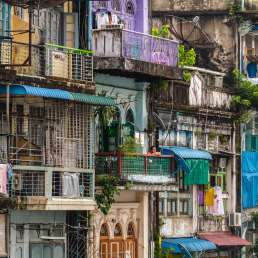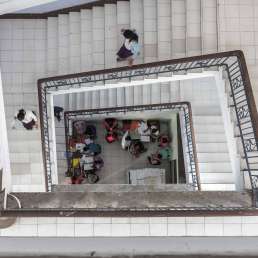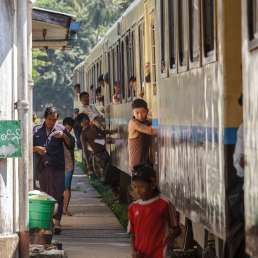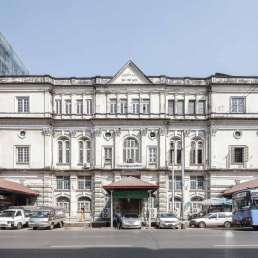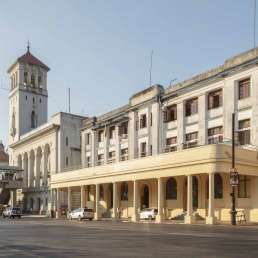Address: 74-78 29th Street
Year built: 1914
Architect: Unknown
This building on narrow 29th Street may not strike you as a temple at first: its design is closer to the city’s official colonial-era architecture. One clue, however, lies in the two golden lion figures on the roof. These represent Mahavira, the most recent of Jainism’s 24 Jinas—liberated beings who can help others achieve liberation themselves. The result is an interesting mix of religious carvings on an otherwise neoclassical façade. The signpost on the entrance, “Shree Jain Shwetamber Murtipujak Temple” denotes the sect and sub-sect of Jainism to which this temple belongs. Murtipujaka differs from other Jain sects in that its temples contain idols instead of being empty.
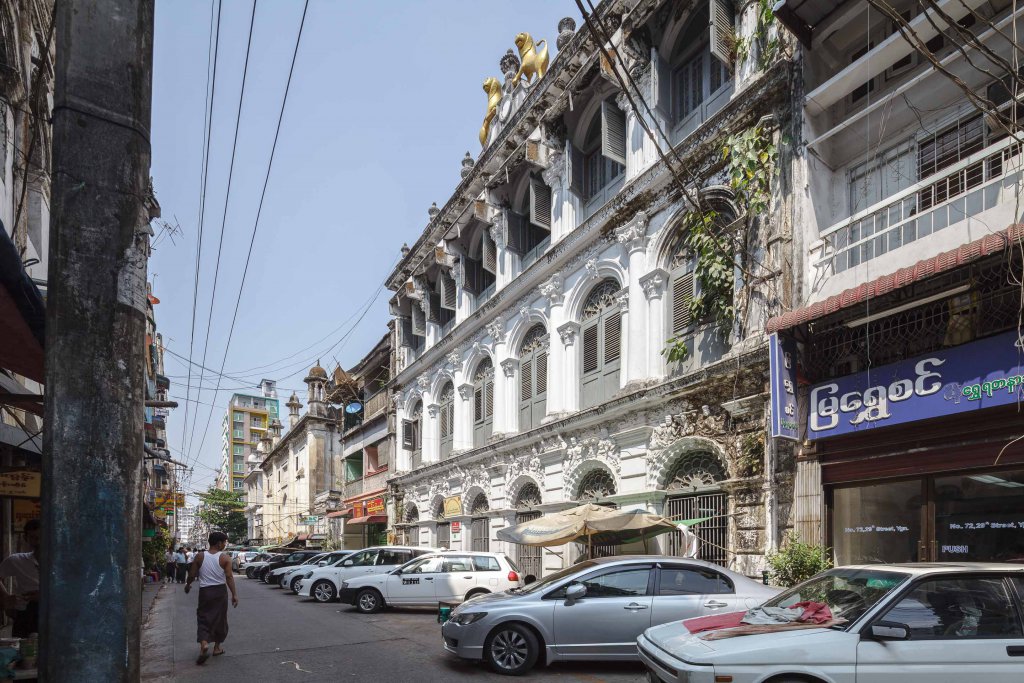
Jainism is one of India’s smallest but oldest religions, numbering about five million believers. Its most famous principles are nonviolence and strict vegetarianism. During British rule as many as 10,000 Jain lived in Rangoon. The community’s first temple, occupying the top floor of a building inside the Surati Bazaar (today’s Theingyi Market), was founded in 1899. Most Jain left the country during the Second World War and after the Ne Win coup of 1962. No exact figures exist as to today’s Jain population in Myanmar. Some sources state that Myanmar as a whole is home to 2,000 Jain. Others speak of only five Jain families remaining in today’s Yangon. Most Jain originally hailed from Gujarat, contributing to the rich mix of people living in Yangon from this part of India. In contrast to India, there is considerable mixing among the various religions. Paris-based writer Mira Kamdar, who herself has Jain roots through her grandmother’s line, recounts a visit to Yangon in 2000, while she was tracing her Indian ancestors who had once lived in Burma:
“For the first time in my life outside the rarefied circles of the intellectual Westernised elite of New York, New Delhi, or Bombay, I find myself in a world in which Hindus, Jains, and Muslims mix comfortably and even affectionately in each other’s homes, over meals no less. In Gujarat, this kind of easy mixing in people’s homes would be quite extraordinary. Whereas Hindus and Jains and Muslims may be good friends in public spheres, such as school or work, in the private sphere of the home it would be unusual to get together. (…) I found none of that in Rangoon. And, as people brought out their wedding albums and photographs of important community events, it became clear these close relationships across religious lines went back many years, for they had been—the men at least—present at all the important occasions of each others’ lives.”
